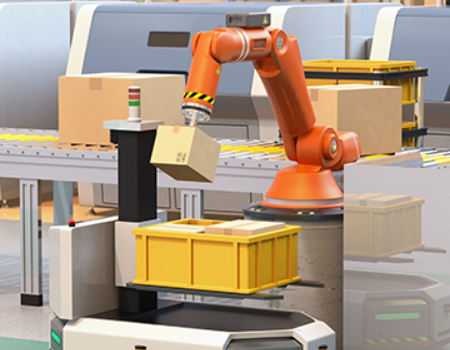
In a logistics landscape shaped by rising demand and tight competition, automation has become essential for maintaining efficient warehouse operations. Among the most impactful technologies is the mobile robot—an innovation that’s redefining how goods move, inventory is managed, and tasks are performed within modern warehouses.
Mobile robots have quickly transitioned from niche tools to central components in logistics strategies, offering flexible and scalable solutions that enhance productivity across the board.
Labor Gaps Fuel a Surge in Mobile Robotics
A recent report by the International Federation of Robotics (IFR) reveals a 48% increase in the global sale of service robots for professional use, reaching 158,000 units in 2022. A significant portion of this surge is attributed to growing labor shortages, which have driven organizations to seek alternatives that maintain performance without relying solely on human labor.
The logistics and warehousing sector saw especially strong growth, with mobile robots used for goods transport and internal logistics outpacing other service applications. In particular, robots designed for collaborative indoor work environments experienced a 78% spike in sales, demonstrating widespread industry adoption.
Key Gains from Warehouse Automation
Efficiency in warehouse operations directly impacts a company’s ability to meet customer expectations and reduce costs. Mobile robots play a critical role in automation efforts by taking over repetitive tasks and maintaining consistent performance. They support functions like internal transport, inventory checks, and order fulfillment—all without fatigue or delay.
By integrating mobile robotics into their supply chains, companies can respond faster to market demands, shorten lead times, and streamline daily operations.
How Mobile Robots Enhance Productivity
From route planning to error reduction, mobile robots deliver improvements across several key areas in warehouse logistics:
Route Optimization
Effective movement of goods from receiving docks to shipping zones is crucial for smooth operations. Mobile robots are equipped with intelligent navigation systems that enable them to plan efficient paths, avoid congestion, and adapt to changes in their environment. This not only improves speed but also reduces equipment wear and operational costs.
Real-Time Inventory Accuracy
Keeping accurate stock levels is vital to prevent shortages or overstocking. Mobile robots use advanced sensors and recognition systems to monitor inventory in real time. They can confirm the correct placement of items and provide updates to inventory management systems, ensuring up-to-date stock visibility and better replenishment planning.
Streamlining Picking and Packing
The picking and packing process is often one of the most time-consuming tasks in a warehouse. Mobile robots reduce inefficiencies by retrieving items and delivering them to packing stations. Their ability to work alongside human operators enables more flexible and responsive workflows, especially during peak periods.
Flexibility in Handling Demand Spikes
Fluctuating demand—driven by seasonality, market trends, or external disruptions—can strain warehouse resources. Unlike fixed automation, mobile robots can be repurposed for various tasks and relocated as needed. Their adaptability allows operations to scale quickly without large infrastructure changes.
Error Reduction
Mistakes in logistics lead to costly delays and dissatisfied customers. The precision offered by mobile manipulators, like those used in Pick & Place operations, significantly reduces the likelihood of errors. These robots ensure consistent handling and improve reliability across warehouse processes.
Integrating Mobile Robots into Existing Systems
Today’s mobile robots are designed for seamless integration with warehouse management platforms and automation infrastructure. Using standardized communication protocols, they can interact with other systems and equipment to coordinate workflows. Fleet management tools allow centralized oversight of robot tasks, further optimizing resource use.
Their modular design also enables customization for different tasks—from handling fragile goods to supporting assembly lines—making them suitable for a wide range of logistics needs.
Final Thoughts: A Smarter Way to Optimize the Warehouse
Mobile robots are not just a response to labor shortages—they’re a strategic investment in long-term efficiency and competitiveness. As highlighted in the IFR’s latest findings, the use of autonomous mobile robots in transport and logistics continues to expand rapidly.
Their role in automating critical warehouse functions, improving accuracy, and adapting to shifting operational demands makes them essential assets for businesses looking to stay ahead. As global supply chains grow more complex, mobile robotics offers a reliable way forward—delivering measurable gains in productivity, accuracy, and responsiveness.












